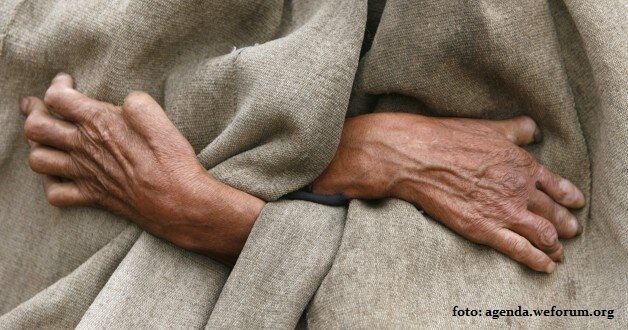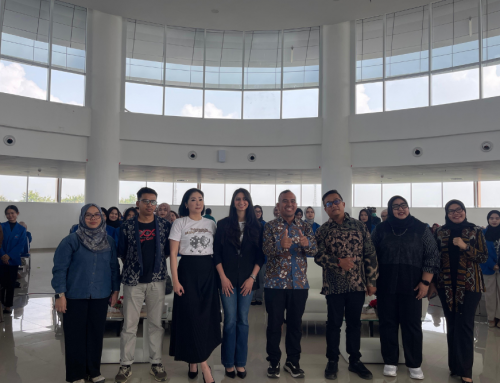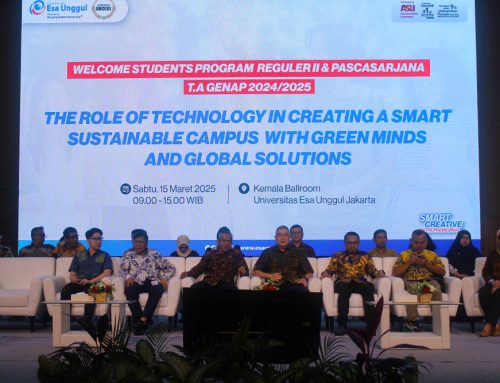
World Leprosy Day is held every year on the last Sunday of January. In 2024, the commemoration of World Leprosy Day falls on Sunday, January 28. According to the World Health Organization (WHO), the commemoration of World Leprosy Day aims to increase public awareness and concern for leprosy and its sufferers.
So what about World Leprosy Day in 2024, why do we celebrate World Leprosy Day, and what can we do? The following is a summary of our conversation with Prof. Maksum Radji, Professor of Microbiology, Pharmacy Study Program, FIKES, Esa Unggul University Jakarta.
According to Prof. Maksum, World Leprosy Day is celebrated to raise awareness of a disease that some people think no longer exists. Whereas every year there are still more than 200,000 new cases worldwide and millions of people live with the adverse effects of delayed leprosy treatment.
“World Leprosy Day is celebrated to provide sympathy and empathy for the lives of people affected by leprosy and to raise awareness of the symptoms of the disease, as well as to provide understanding to the public so that there is no longer a negative stigma on leprosy sufferers and to increase the dignity of people affected by this disease,” he explained.
Theme and Meaning of World Leprosy Day 2024
Prof. Maksum added that leprosy is one of the oldest diseases experienced by mankind, where currently there are millions of people living with disabilities due to leprosy, especially in Asia, Africa and South America. Leprosy can be cured with a combination of antibiotics known as Multi Drug Therapy (MDT). If leprosy is left untreated, it can lead to serious complications.
The theme for World Leprosy Day 2024, as reported on the WHO website, is “Beat Leprosy”. The meaning of this theme is an invitation that besides leprosy no longer being a source of negative stigma, it is also an opportunity to show that leprosy can be treated and defeated and can be cured.
What is the Cause of Leprosy?
Launching the page https://www.leprosymission.org/what-is-leprosy/ Prof. Maksum explained that leprosy, also known as Hansen’s Disease, is caused by a bacterium called Mycobacterium leprae. This disease mainly affects the skin, nervous system, and eyes. However, leprosy is not a highly contagious disease. The incubation period, which is the time between infection and the appearance of symptoms, is quite long, averaging about five years, but can range from one year to 20 years. During the incubation period, an infected person does not show any signs or symptoms, but can already transmit it to others.
“Anyone can actually contract leprosy, but most of us have a strong enough immune system that we do not suffer from leprosy, even though we live in a country that is endemic for leprosy,” he said.
Prof. Maksum added that the history of leprosy has been going on for centuries and dates back thousands of years. According to WHO, throughout history lepers were often ostracized by society and families, because they were considered a curse due to sin.
“In the modern era, the cause of leprosy was first identified in 1873 by Gerhard Henrik Armauer Hansen, a Norwegian chemist and biologist, as the bacterium Mycobacterium leprae. The discovery of the bacteria that causes leprosy is considered to have ended the negative stigma against leprosy that leprosy is not a curse for sufferers, but is caused by a bacterial infection. Therefore, leprosy is also called Hansen’s disease,” he said.
Pathophysiology and Transmission of Leprosy
Prof. Maksum elaborated that Mycobacterium leprae bacteria are transmitted through close and prolonged contact between susceptible individuals and infected patients. The main mode of transmission is through nasal secretions or droplets. In addition, transmission can also occur through skin erosion, or blood and is transmitted vertically from mother to baby.
“Individuals living in endemic areas can be infected by Mycobacterium leprae but not suffer from leprosy. Based on a study, genetic material from Mycobacterium leprae was found in nasal biopsies and antibodies to bacterial antigens in healthy individuals living in endemic areas,” she explained.
The clinical manifestations of leprosy, according to Prof. Maksum, are influenced by the patient’s cellular immune system against Mycobacterium leprae. The first defense during Mycobacterium leprae infection is natural immunity, including epithelial integrity, IgA secretion, NK (natural killer) cells, and activated macrophages. Inflammatory cytokines and chemokines can activate the proliferation of lymphocytes. This response will determine the course of the disease into tuberculoid or lepromatous leprosy.
Tuberculoid leprosy is a mild form of leprosy and is not contagious. A person with this type of leprosy has good immunity and the infection only causes a few lesions. Meanwhile, lepromatous leprosy is characterized by lesions that become more extensive and even form large nodules or lumps, due to the deterioration of the sufferer’s immune system. This type of leprosy affects the skin, nerves and other organs, and should be watched out for as it is more contagious.
“Clinical manifestations can occur after a long incubation period ranging from 6 months to 20 years. Antibodies to Mycobacterium leprae antigens can be found 9 years before the appearance of clinical symptoms. The long incubation period of Mycobacterium leprae is due to the slow proliferation of bacteria in the body of the sufferer. In general, infection with Mycobacterium leprae can also cause a leprosy reaction, which is characterized by redness of the skin and new lesions that appear suddenly, as well as Erythema Nodosum Leprosum (ENL) which is characterized by many skin nodules, fever, red eyes, muscle pain and joint pain. Complications of leprosy can affect the nerves of the extremities, skin, lining of the nose and upper respiratory tract, among others. If the patient does not get the right treatment or is not treated immediately, it will result in permanent nerve damage. Neuropathy or nerve damage that occurs in people with leprosy is what causes them to experience complications in the form of disability or paralysis,” he said.
Leprosy Treatment Efforts
So how has leprosy been treated so far?
Answering this question, Prof. Maksum explained that one of the first breakthroughs in leprosy treatment was the development of the drug Dapson. This first leprosy drug was developed in the 1940s. However, the length of treatment, which took years, often made it difficult for patients to take their medication regularly. In addition, in the 1960s, the bacteria Mycobacterium leprae was found to be resistant to dapsone. The only anti-leprosy drug known at the time.
“In 1981, WHO recommended a leprosy treatment regimen called Multi Drug Treatment (MDT) that could help break the chain of leprosy transmission in the community. The recommended MDT regimen consists of a combination of dapsone, rifampicin and clofazimine. This treatment lasts for six months to 12 months.
Leprosy cases in Indonesia.
Prof. Maksum mentioned that based on data reported by WHO, Indonesia accounts for the third highest number of leprosy cases in the world after Brazil and India. So leprosy cases in Indonesia are still relatively high. Based on data from the Indonesian Ministry of Health, around 17,000 – 20,000 new cases of leprosy are found every year. According to the Directorate General of Communicable Disease Prevention and Control (P2PM) of the Indonesian Ministry of Health, until the first semester of 2023 the number of leprosy patients in Indonesia reached around 13 thousand people.
“The World Health Organization (WHO) includes leprosy as one of the 20 neglected tropical diseases and is targeted to be eliminated by 2030, including in Indonesia. The prevalence of new leprosy cases with disabilities in the eyes, feet and palms is still above 10%. This figure is still far below the government’s target of below 5%. If these cases are treated late, they can experience lifelong disabilities,” he explained.
Preventive Measures
According to Prof. Maksum, given that until now, there is no vaccine for leprosy prevention, early diagnosis and proper treatment are the best efforts to prevent complications and transmission of leprosy.
In addition, it is necessary to increase the capacity of the health service system in prevention efforts, early discovery of new cases, diagnosis and management of leprosy in a comprehensive and quality manner, as well as increasing integration and coordination with stakeholders in the health sector, both government and private, starting from the national level to the village level.
“In addition, integrated efforts are needed to provide information and education about leprosy to the community, especially in endemic areas, so that sufferers are willing to get examined and receive treatment. Providing this information is expected to eliminate the negative stigma about leprosy and to produce comprehensive health services for leprosy prevention,” he concluded.
***







